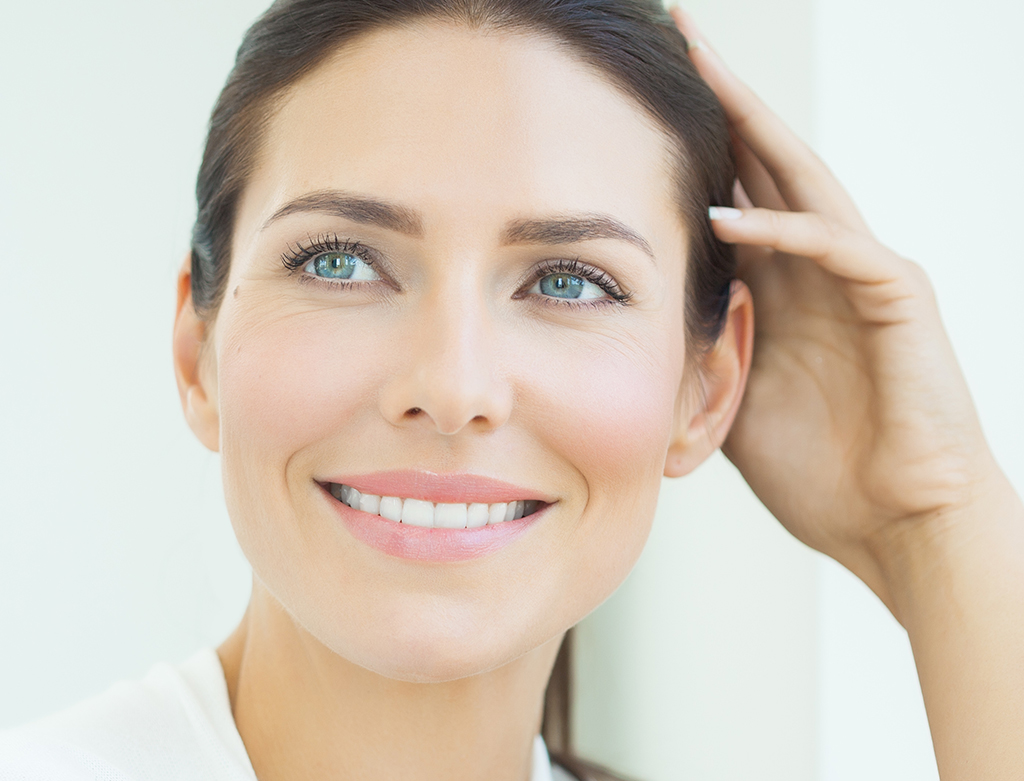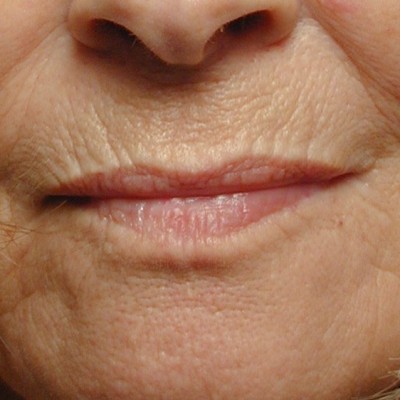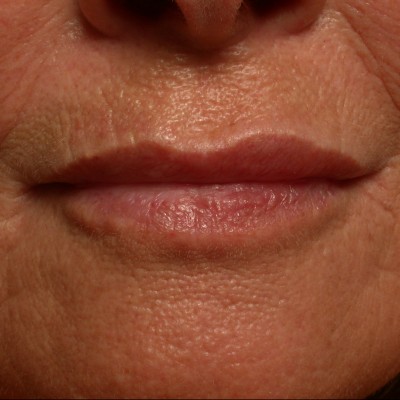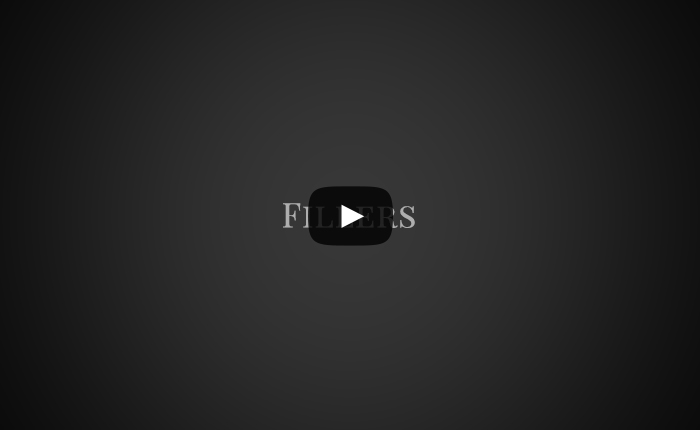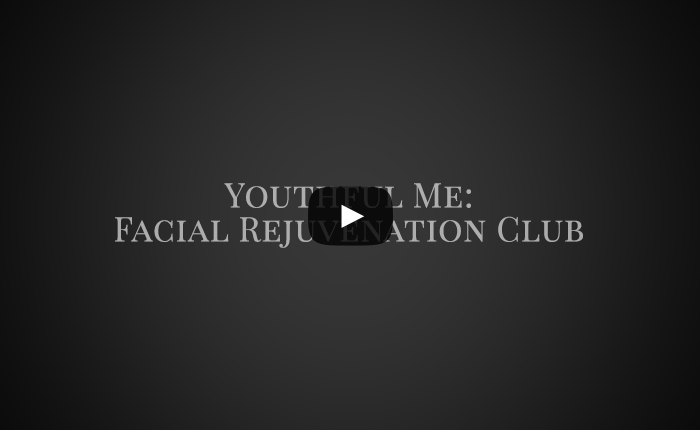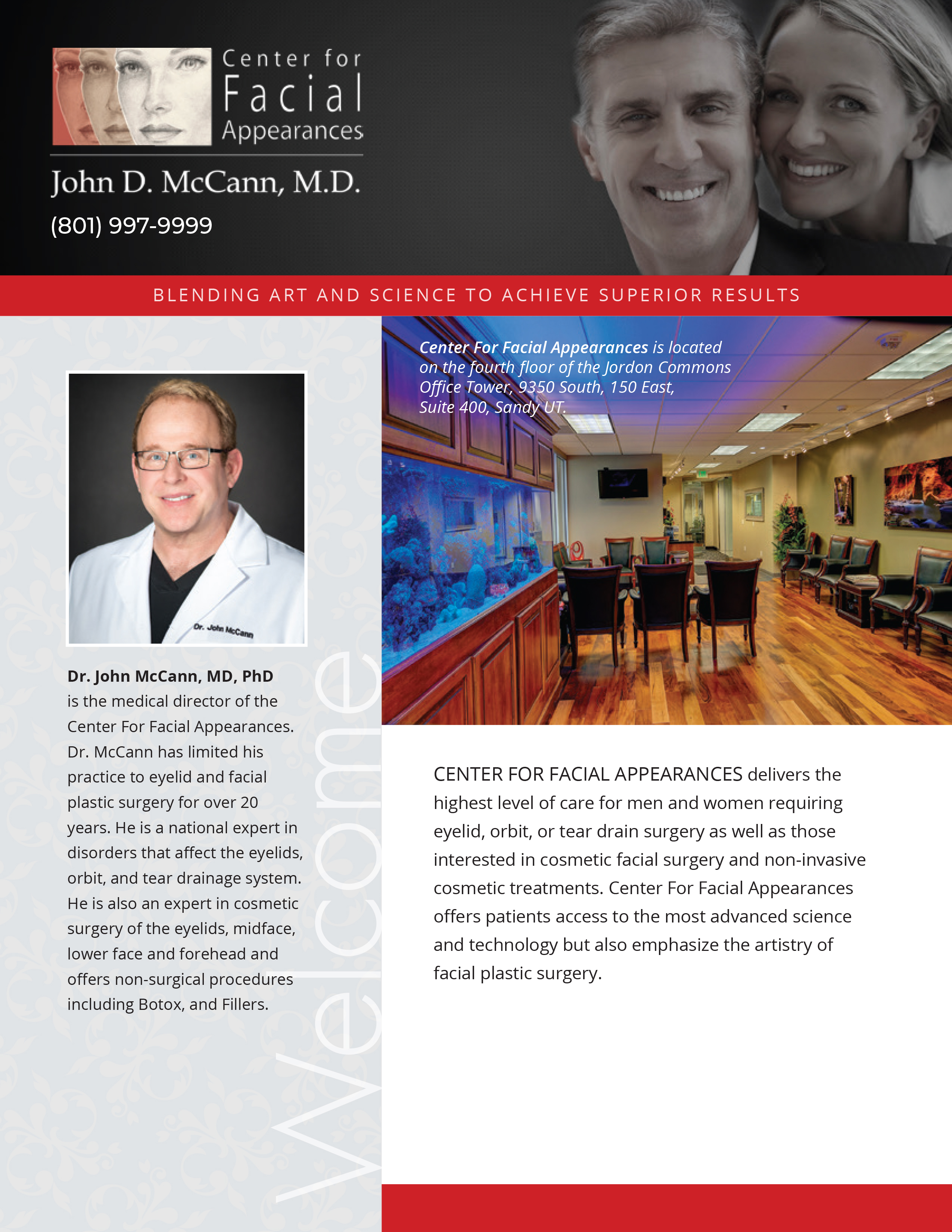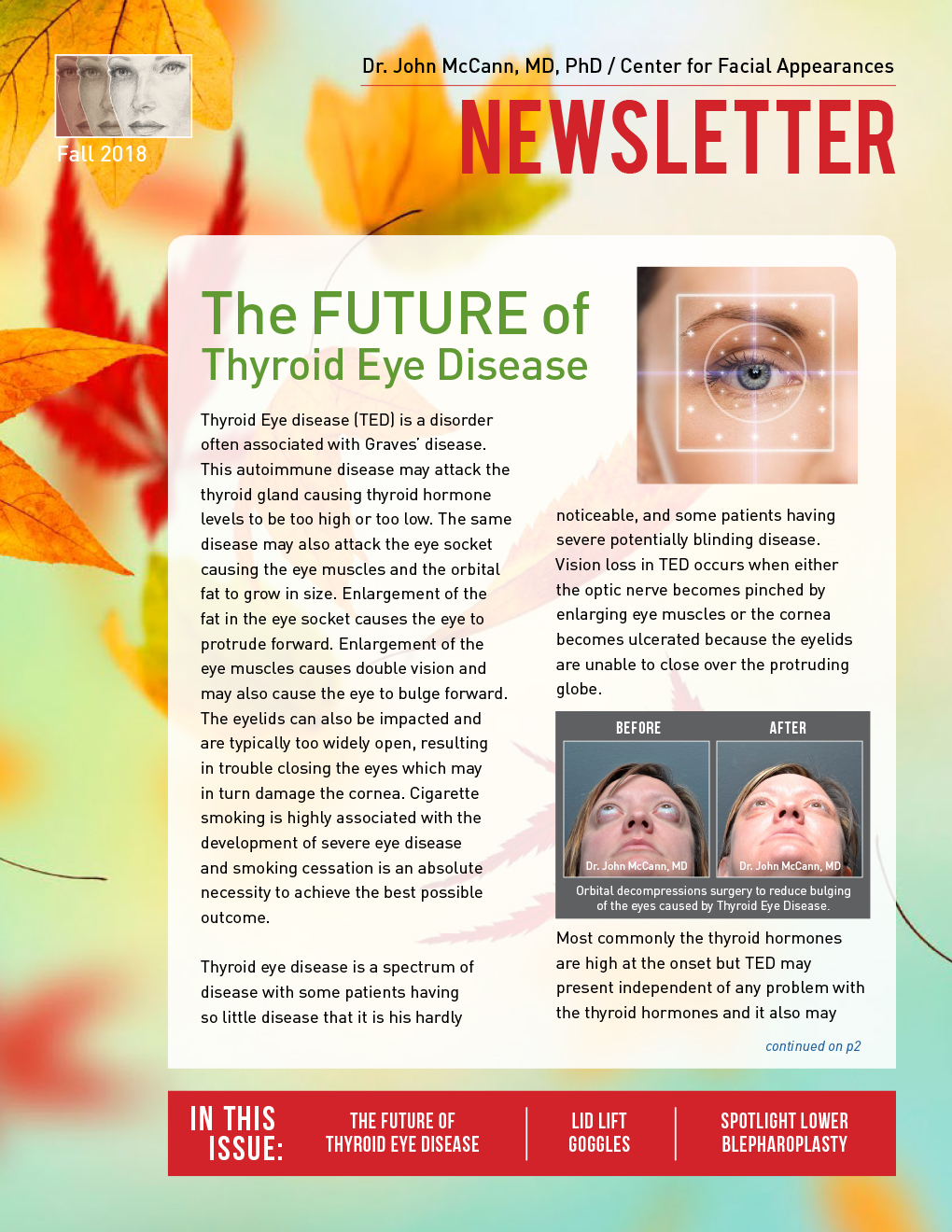Fillers
Have you noticed the development of wrinkles around the mouth? Are you developing creases in the corner of your mouth? Are you developing deepening of the nasolabial fold beneath the corner of then nose? Are your cheeks sagging? Are you developing deep wrinkles in your cheeks or chin? Are you developing a dark circle under your eyes? If the answer to any of these is yes Dr. John McCann at the Center For Facial Appearances may be able to help with the use of cosmetic filler treatments.
With the passage of time the face and lips tends to lose volume, which causes the skin to look less full, less tight, and more wrinkled. Fillers are synthetic materials that are injected into the face to increase lip, cheek, or chin volume. Fillers can also be used to reduce the nasolabial fold and to fill in creases in the skin. In some cases, filler can be used to treat the hollows beneath the eyes.
Filler treatments are minimum recovery treatments that can be performed over the lunch hour. The primary fillers we offer include Restylane, Juvederm, Radiesse, Belotero and Sculptra. Dr. McCann is happy to discuss with you what you might achieve with the use of fillers and which one is best for your individual concerns. The Center for Facial Appearances proudly serves patients from Salt Lake City, Draper, Sandy, as well as South Jordan, Park City, and surrounding areas.
The Center for Facial Appearances encourages patients who receive Cosmetic Filler to join Club Youthful Me. Club members pay for filler treatments on a monthly basis and receive substantial discounts through the Club. Club Youthful Me allows patients to receive treatments by a skilled physician and surgeon at a medical practice at prices that are competitive with Medical Spas.
Frequently asked questions concerning dermal filler injections
What is a dermal filler?
A dermal filler is a material injected into or beneath the skin to add volume to the face.
Why are dermal filler treatments popular?
Dermal filler treatments typically cause a consistent improvement in facial appearances that can be seen immediately after the treatment, yet with little or no recovery.
Why do dermal fillers make people look younger?
With the passage of time we loose volume in the face. Loss of volume results in deflation of the face. Our face is much like a round inflatable ball. If the ball is fully inflated there are no wrinkles on the surface. If we let some air out of the ball, wrinkles form on the surface. If more air is let out of the ball, it no longer maintains a round shape. Dermal filler essentially re-inflates the face.
Who gives dermal filler treatments at the Center for Facial Appearances?
We have found that patients prefer to have treatments performed by a physician. Only board certified surgeons administer dermal filler treatments at the Center for Facial Appearances.
Are the physicians at the Center for Facial Appearances experienced in the use of dermal fillers?
Our center is one of the largest volume users of dermal fillers in the intermountain west. Our doctors developed some of the applications for dermal fillers. The doctors have been using the dermal fillers on a regular basis since the FDA approved them.
What areas of the face are fillers used in the most?
Dermal fillers are used most frequently in the nasolabial folds (the fold between the cheek and mouth), the cheeks, and the lips. More and more fillers are being used to accomplish changes that formerly required face lift surgery or surgery to place cheek or chin implants. In these cases, filler is injected beneath in the cheeks or chin to generally add volume to the face.
Do dermal filler treatments and Botox treatments do the same thing?
They both can make one look younger and more rested, but do so in different ways and in different parts of the face. Botox reduces wrinkles caused by contraction of muscles by relaxing those muscles. It works best in the forehead, between the eyebrows, and in the area just lateral to the eyelids (crow’s feet wrinkles). Filler adds volume to the face and works best in the areas of the face that lie below the eyes.
Can one receive Botox and dermal filler treatments at the same time?
Yes. Dermal filler and Botox are often used simultaneously to treat different areas of the face resulting in a synergistic effect. Rarely, people will wear very deep wrinkles in the area between the brows, crow’s feet, and forehead that do not resolve completely even when the muscle is relaxed with Botox. In these situations filler can be used in combination with Botox to elevate the deep wrinkles.
Can one receive dermal filler treatments and have cosmetic surgery at the same time?
Yes. In some cases dermal filler injections can delay or even alleviate the problems formerly treated with cosmetic surgery. However, some issues, such as excess skin in the upper eyelids and sagging skin in the neck, cannot be improved with dermal filler. We often use dermal filler at the time of cosmetic surgery to enhance the results of surgery.
How do filler treatments in the lips work?
Some young people simply like having full lips. Adding filler can give one more full lips. In middle age there are some aging changes that alter the appearance of the lips. The upper lip gets longer which allows some of the red part of the lip to roll under resulting in the appearance of less redness in the upper lip relative to the lower lip. There is also a loss of elasticity and volume in the skin. This allows vertical wrinkles to form in the upper and lower lips. Injecting filler into the lip can roll out the upper lip exposing more of the red portion of the lip. Injecting filler on the edge of the red part of the lip and into the vertical wrinkles can reduce these wrinkles. These changes can be accomplished without markedly increasing the size of the lips or giving one an unnatural appearance. Juvederm is the most commonly used filler in the lips. These treatments are typically repeated less than once every 6 months.
How do filler treatments work in the lower eyelids?
Some of the aging changes in the lower eyelid are caused by separation of the cheek fat from the lower eyelid fat. This leaves a depression or valley at the intersection of the lower eyelid with the cheek. Many people refer to this as a dark circle. Adding filler to this valley or depression can cause the dark circle to resolve. Restylane is the most commonly used filler in the lower eyelids. These treatments are typically repeated about once every 1.5 years.
Do filler treatments in the lower eyelid work equally well in all patients?
No. It works better if the skin is pigmented or thicker. In lightly pigmented female patients the skin tends to be translucent allowing the filler to be visualized beneath the skin. We have found this technique to work better in patients of pigment and in male patients, as men tend to have thicker skin in the lower eyelid. This is only a concern for the lower eyelids because this skin is so much thinner than the skin on rest of the face.
What fillers are used at The Center for Facial Appearances?
Juvederm, Restylane, Sculptra, Belotero, and Radiesse are currently the most popular fillers.
What is Juvederm?
Juvederm is a cross-linked hyaluronic acid. Hyaluronic acid occurs naturally in the skin, and it attracts water increasing the fullness or plumpness of the skin. Restylane and Belotero are also hyaluronic acid fillers. As we age we loose hyaluronic acid from the skin resulting in loss of fullness and deflation. Injecting Juvederm can increase the fullness and inflate the skin. The fact that hyaluronic acid occurs naturally in the skin accounts for the low incidence of allergic reaction to Juvederm.
What is Radiesse?
Radiesse is a calcium based microsphere suspended in a gel. It is a long acting filler that is best used for treatments deep in the skin. It is used most commonly to add volume beneath the nasolabial folds. It should not be injected superficially in the skin, and we do not use it to treat lips. It can be used very effectively in those who have generalized loss of volume in the face to add volume over the cheeks and even along the jaw line. Radiesse treatments are repeated less than once every six months.
Is it necessary to perform skin testing prior to using filler?
No. Allergic reaction to available fillers is so rare that the manufacturers do not recommend skin testing.
What filler is best for me?
It depends on the patient and the problem that is being treated. For instance we do not typically recommend the use of Radiesse in the lips because it can cause the lips to feel lumpy. If you are not sure about the use of filler but would like to try it out, you may want to use Juvederm because if you do not like the appearance it can largely be reversed with injection of a second medication. The answer to this question is best achieved with a formal consultation.
What needs to be done to prepare for filler injections?
Very little needs to done. Some medications such as Motrin, aspirin, vitamin E, gingko, fish oil, and glucosamine thin the blood and promote bruising with filler treatments. If these have been prescribed by a doctor or to treat a specific medical problem such as cardiac disease, you should continue to take the medication.
Do filler injections hurt?
Most patients at The Center for Facial Appearances report little pain. The Center for Facial Appearances is interested in making filler treatments as comfortable as possible. First of all, the smallest needle possible is used. We offer numbing cream to reduce the sensation of the skin. At one time Radiesse treatments were quite uncomfortable, but we are now able to mix Radiesse with a small amount of medication that numbs as the medication is injected. Juvederm and Restylane come premixed with numbing medication.
What is recovery like for filler treatments?
One of the great things about filler treatmentss is that it requires little or no recovery. Most patients treated with filler get little or no bruising. The exception to this is the lower eyelids where patients will often get some bruising. The face develops some small bumps from swelling adjacent to the treatment sites. These typically resolve in about an hour. Patients often apply a cold compress over the treated portions of the face to reduce the swelling. There may be some areas that feel but do not look lumpy. This typically resolves in a week or less.
Do the doctors at the Center for Facial Appearances use fillers that have not been approved by the FDA?
No. The United States has one of the safest drug selections of any country in the world because of safe guards put in place by the FDA. We will not offer fillers to our patients until they are approved by the FDA. The only exception to this is when we perform clinical trials in which case patients sign a special consent form clearly outlining the risk of participating in the study.
Do the doctors at the Center for Facial Appearances use fillers and other drugs on an off label basis?
Yes. When a drug is approved by the FDA it is typically approved for a narrow indication. It is common in the practice of medicine to use medications for indications other than the one it is approved for. For instance, Procardia was approved by the FDA for the treatment of chest pain but at one time was prescribed by doctors mostly for the treatment of high blood pressure. Botox was initially only approved to treat wrinkles between the eyebrows. We also use it on the forehead and in the crow’s feet area. We will only use fillers that are approved by the FDA, but we often use fillers and other medications on an off label basis.
Related Procedures
Dr. McCann offer additional cosmetic treatments. Learn more about them.


